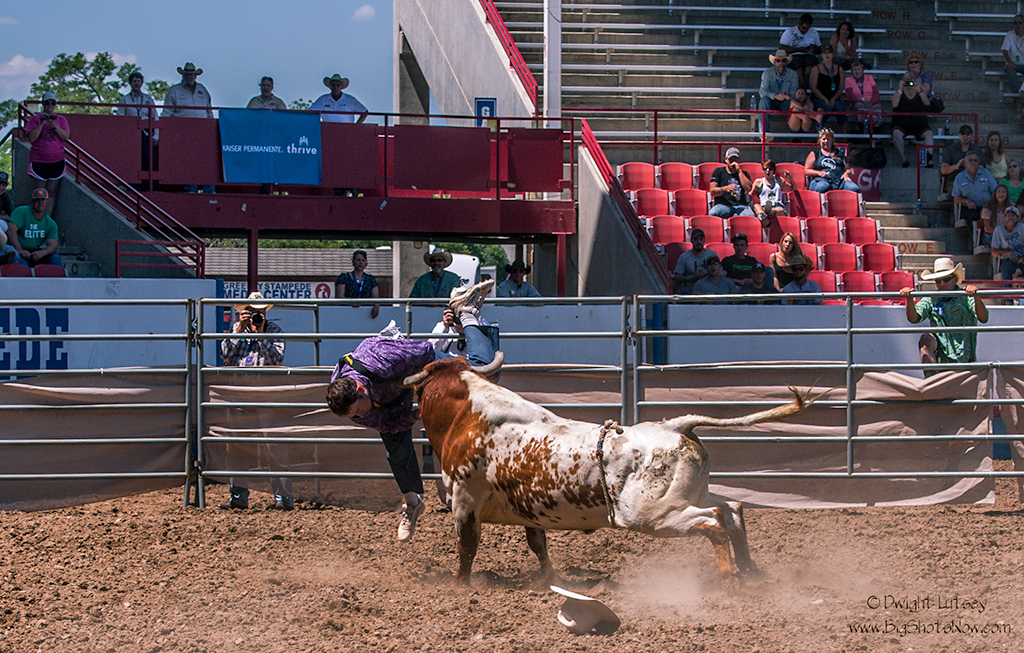I’m sure most of you, if not all of you, have been to Seville or Barcelona for the bullfights. Many of you have been to Pamplona to run with the bulls, at least that’s what you tell us when we do our annual poll on “What I Did With My Summer”. But very few of you tell us I was a contestant in American Bullfighting.
The cowboy in the shot above was a contestant and right about now he wishes he were sitting in the stands of La Maestranza in Seville watching some guy in fancy red pants swirl a cape around to confuse the bull. That cape and those short sticks with steel barbs to stick in the bull to make it madder are some of the main differences between Spanish bullfighting and American bullfighting.
The first difference is our bulls are mad enough already, you don’t want them any madder if you can help it. Remember this is their payback time and they remember that these same cowboys were the ones trying to ride them just a short while ago. If they get the chance to stick it to them they’re going to make the best of it.
Secondly, we don’t use capes or have some other guy on a horse stick big old gaffing hooks into the bull to make it mad and lower its blood count so it’s easier to manage. In American bullfighting it is the cowboy against the bull with no capes, no sticky pointy things to irritate the bull, just the cowboy with his speed, dexterity and wits against the bull with its 900 lbs. of muscle and long curved horns and owl-ly attitude.
Thirdly, and this is the best part, there’s no dead bull at the end of the fight to drag out of the arena and usually no dead cowboy either. They both get to kiss and make up and do it again when the cowboy feels better. Also our cowboys are grateful that they don’t have to wear those really tight pants and short little jackets with spangles all over them and that hat with the bulbs over their ears that are supposed to look like horns. I mean they’re really glad.
So what’s the point then, some of the more blood-thirsty among you may ask. The point is, this is a cowboy going into this contest to try and make as much contact with the bull as possible by getting close to it, grabbing its horns, sometimes leaping over the bull as it charges him, all the time trying very hard to avoid the horns of the bull. These horns, which have had the points filed down so there is less trauma to the cowboy and to prevent the bull from having nightmares and bad feelings from having perforated the cowboy, are still deadly appendages to deal with. If you think that this lessens the bulls ability to provide pain and suffering to the cowboy think again. Imagine getting stuck by something about an inch in diameter that is being pushed very forcefully into your nether regions by a 900 lb. animal that doesn’t like you and that wants to do that sticking and pushing as many times as it can, with the cowboy of course, trying to avoid this and you get a small idea of how dangerous this whole deal is.
That’s American bullfighting. A man with his wits and courage trying to outwit a huge angry animal with its muscle and horns. The match is much more good-natured than its Spanish counter part and both contestants leave the arena with the feeling they’ve done their best. The best cowboy goes home with a beautiful silver belt buckle and hopefully some money, and the best bull gets bragging rights back in the bullpen. That’s a lot better than getting dragged out of the arena behind a horse with your ear cut off. For either contestant.


You must be logged in to post a comment.